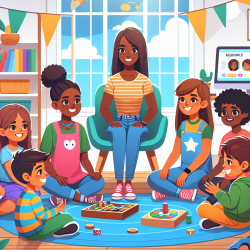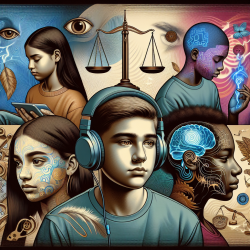Are you a practitioner looking to improve outcomes for children with social anxiety disorder? The recent research titled "Recognizing oneself in the encounter with others: Meaningful moments in systemic therapy for social anxiety disorder in the eyes of patients and their therapists after the end of therapy" offers invaluable insights that can transform your practice. Here’s how you can leverage these findings to make a real difference.
Understanding Meaningful Moments in Therapy
The study identifies three key categories of meaningful moments that significantly impact therapy outcomes:
- Meeting Other Patients in Group Therapy
- Therapeutic Resource Orientation
- Recognizing Oneself in a Diagnosis or Pattern of Behavior
These categories highlight how group settings and resource-focused interventions can lead to transformative changes in children.
Implementing Group Therapy
Meeting Other Patients in Group Therapy: The research found that children often experience relief and a sense of belonging when they see their struggles mirrored in others. This realization can significantly alter their self-image and motivation for therapy.
Actionable Steps:
- Incorporate group therapy sessions where children can share their experiences.
- Use activities that promote interaction and mutual support among participants.
Focusing on Resources
Therapeutic Resource Orientation: Praising children and highlighting their strengths can lead to emotional release and improved self-esteem. The study showed that resource-oriented exercises, such as sketching one's resources, are particularly effective.
Actionable Steps:
- Integrate resource-oriented exercises in your sessions.
- Provide positive feedback and encourage children to recognize their achievements.
Recognizing Patterns
Recognizing Oneself in a Diagnosis or Pattern of Behavior: Helping children understand their diagnosis and recognize behavioral patterns can be empowering. This understanding fosters motivation and enables them to take actionable steps towards improvement.
Actionable Steps:
- Educate children about their condition in a way that is easy for them to understand.
- Use visual aids and examples to help them identify and understand their behavioral patterns.
Why This Matters
The study underscores the importance of creating a supportive environment where children can see themselves in others, recognize their strengths, and understand their behaviors. These elements are crucial for fostering a positive self-image and encouraging active participation in therapy.
Encouraging Further Research
While the study provides a solid foundation, further research is essential to continue improving therapeutic outcomes. Practitioners are encouraged to document their experiences and share their findings to contribute to the growing body of knowledge in this field.
Conclusion
Implementing these research-backed techniques can significantly improve therapy outcomes for children with social anxiety disorder. By focusing on group therapy, resource orientation, and helping children recognize their patterns, you can create a more effective and supportive therapeutic environment.
To read the original research paper, please follow this link: Recognizing oneself in the encounter with others: Meaningful moments in systemic therapy for social anxiety disorder in the eyes of patients and their therapists after the end of therapy.










